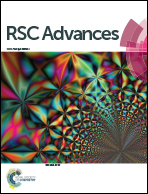Nanocurcumin: preparation, characterization and cytotoxic effects towards human laryngeal cancer cells
Abstract
The aim of the present study was to prepare curcumin nanoparticles (nanocurcumin) by a sol-oil method to improve curcumin absorption and bioavailability, and to investigate the therapeutic effects of the prepared nanoparticles on the inhibition mechanisms towards human Hep-2 cancer cells. The nanoparticles were characterized by Fourier transform infrared spectroscopy, transmission electron microscopy, X-ray diffraction, and zeta potential analysis. The prepared curcumin nanoparticles possessed a narrow particle size distribution with an average diameter of 28 nm. The inhibition effects on the growth of human Hep-2 cells were investigated using neutral red uptake and lactate dehydrogenase assays. The results indicated that the nanocurcumin has a selective effect in inhibiting Hep-2 cell growth in a dose- and time-dependent mode with the most effective IC50 value (17 ± 0.31 μg ml−1) obtained after 48 h of incubation without any cytotoxic effects on normal cells. This IC50 value of nanocurcumin revealed a significant increase of early and late apoptotic cells with an intense comet nucleus of Hep-2 cells as a marker of DNA damage. Flow cytometry analysis of the progression of apoptosis in nanocurcumin Hep-2 treated cells showed that arresting in the cell cycle in the G2/M phase with increasing apoptotic cells in the sub-G1 phase. At the same time, real-time PCR analysis indicated that the treatment of Hep-2 cells with nanocurcumin resulted in upregulation of P53, Bax, and Caspase-3, whereas there was downregulation of Bcl-XL. These findings gave insights into understanding that the inhibition mechanisms of nanocurcumin on the proliferation of Hep-2 cancer cells was through the G2/M cell cycle arrest and the induction of apoptosis was dependent on Caspase-3 and p53 activation. However, in vivo studies with an animal model are essential to validate these results.



 Please wait while we load your content...
Please wait while we load your content...